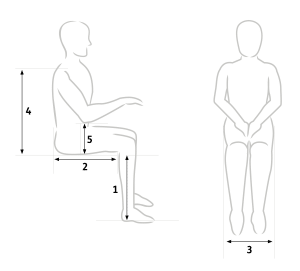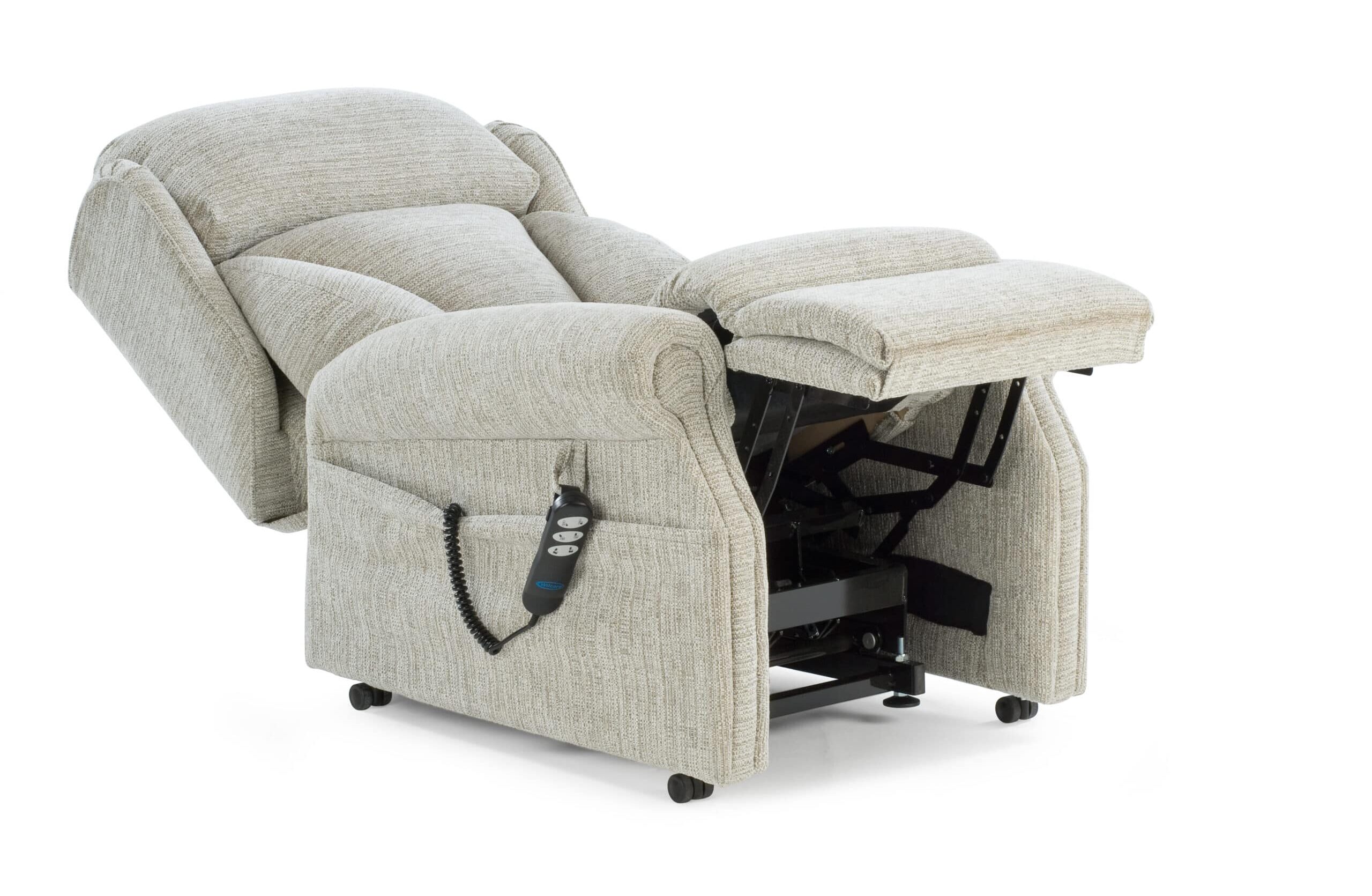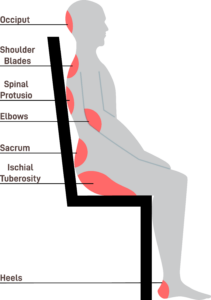Top health benefits of a riser recliner chair
You may be considering buying a riser recliner chair but wondering whether there’s any real benefits for your health. You may even feel there’s too much fuss about nothing when it comes to how you should sit.
This is a topic many of our customers ask us about and for good reason. It’s about making sure your purchase is a good investment.
The truth is, it does matter and the purpose of this guide is to explain why. This isn’t intended to be an exhaustive list, or to focus on any one health condition, but to act as a starter guide to the health benefits a riser recliner chair can give you.
6 health improvements you can benefit from with a riser recliner chair
Research by the British Heart Foundation suggests people aged 65 and above spend on average over 10 hours per day in a sedentary position. Whether this directly applies to you or not, it’s an indication that your posture while relaxing at home could have a significant impact on your health.
What are the effects of poor posture?
Posture is the position we hold our bodies in when sitting, standing or lying. When we assume a poor posture, we place additional strain on our joints and muscles. While poor sitting posture is often linked to pain and tissue damage in the neck and back, there are other less well-known effects that may be just as harmful:
- Poor posture can exacerbate urinary stress incontinence. This is because poor posture can load extra pressure on the abdomen, and in turn the bladder.
- Likewise, the additional pressure that’s placed on the abdomen when you sit in a slouched posture can cause acid reflux, or gastroesophageal reflux disease (GERD). This occurs when acids or vapours travel up from your stomach into your oesophagus, causing symptoms such as heartburn.
- Respiratory problems may be made worse by poor sitting posture. When the trunk is rounded or slouched, the rib cage and diaphragm can’t expand properly, constricting the exchange of oxygen between the lungs and blood. This means the body must work harder to breathe, and reduced lung function can impact other areas of health such as sleep.
These are all issues that may be avoided with a good sitting posture. In other words, a good sitting posture equals a healthier body. A correctly fitting riser recliner chair that enables good posture, along with its electric lift and recline functions, can give you:
good sitting posture equals a healthier body. A correctly fitting riser recliner chair that enables good posture, along with its electric lift and recline functions, can give you:
1. Improved bladder function
2. Improved digestion
3. Improved lung function
4. Healthier joints and pain relief
Sitting in a position that provides good alignment of the joints relieves pressure on the joints. Strain on joints and pain associated with arthritis, for example, can be reduced even further with a riser recliner compared to other chairs, because it allows you to elevate your legs and requires no physical effort to stand up.
5. Increased energy
If you do struggle to get up from a chair, this can lead to you getting out of breath and becoming fatigued, which in turn increases your risk of falling (more on that below). A riser recliner chair will mean that you exert less energy getting out of a chair, leaving you with more energy to get on with your day.
Likewise, if you experience high levels of fatigue, a tilt in space riser recliner chair may be beneficial. This is because the tilt function decreases the effect of gravity on your body, requiring less energy than holding yourself in upright sitting position.
6. Improved Circulation

Elevating your legs so they are above the level of your heart encourages return bloodflow and reduces backflow in the veins. This improves circulation and is most effective when done as a regular routine, for example 20 minutes at a time, 2-3 times a day. Improved circulation through leg elevation minimises the risk of varicose veins and deep vein thrombosis. It’s also very beneficial in reducing swelling, or oedema, and is recommended as part of leg ulcer treatment. One of the best types of riser recliner chair for swollen legs is a dual motor tilt-in-space riser recliner, as it provides higher leg elevation than a standard single or dual motor.
2 health hazards you can avoid with a riser recliner chair
1. Risks of pressure sores reduced
Sitting in a poor posture, spending a lot of time sitting, and having limited mobility are all factors that put you at risk of developing pressure sores. This risk also increases as we age, because the skin changes, becoming thinner and taking longer to heal.
factors that put you at risk of developing pressure sores. This risk also increases as we age, because the skin changes, becoming thinner and taking longer to heal.
A riser recliner chair can provide pressure relief in two main ways. Firstly, the ability to easily reposition yourself in the chair. It’s super important to regularly reposition yourself to avoid pressure build-up, particularly in the most vulnerable parts of our body – also known as the ‘bony prominences’. These include your heels, sacrum (base of the spine), elbow, shoulders and back of the head. Having limited mobility can impair your ability to reposition yourself. A riser recliner chair, however, enables you to do this at the touch of a button, by adjusting the angle of the backrest and seat. Pressure build-up causes pain, so relieving the pressure on the bony prominences can also significantly improve comfort.
Secondly, redistribute your weight by reclining offloads pressure. For example, tilting shifts your weight away from the Ischial Tuberosities onto the back, effectively redistributing and relieving pressure (Aissaoui et al. 2001 and Michael et al. 2007). This is why a tilt-in-space riser recliner chair is often recommended by OTs as the best for pressure relief. You can read more about this in our Tilt vs Recline blog.
2. Prevent falls
If you’re unsteady on your feet, a riser recliner chair can be a very effective way to prevent falls when transferring in and out of a chair. The electric lift function on a riser recliner chair raises you up to an optimum position for you to mobilise your feet, without requiring any physical effort to do so. If you use a walking frame, you will be lifted to the ideal level to transfer your grip from the arms of your riser recliner to the handgrips of your walking aid, keeping you safe and steady throughout. This also works in reverse so, when you come to sit down, your riser recliner will safely lower you into your chair.
It may surprise you to know that the recline function of a riser recliner can also prevent falls and injuries, by stopping you slipping or sliding out of your chair. A tilt-in-space riser recliner is effective for this because your whole body is tilted backwards when you recline. This helps to hold your pelvis in a stable position and shifts gravity onto your back, enabling a more secure position.

Get in touch
Got a question or want to send us a message? Let’s talk.
Related articles
Standard vs made to measure riser recliner chairs: which is best for me?
How to choose a riser recliner chair
How to measure for a riser recliner chair
